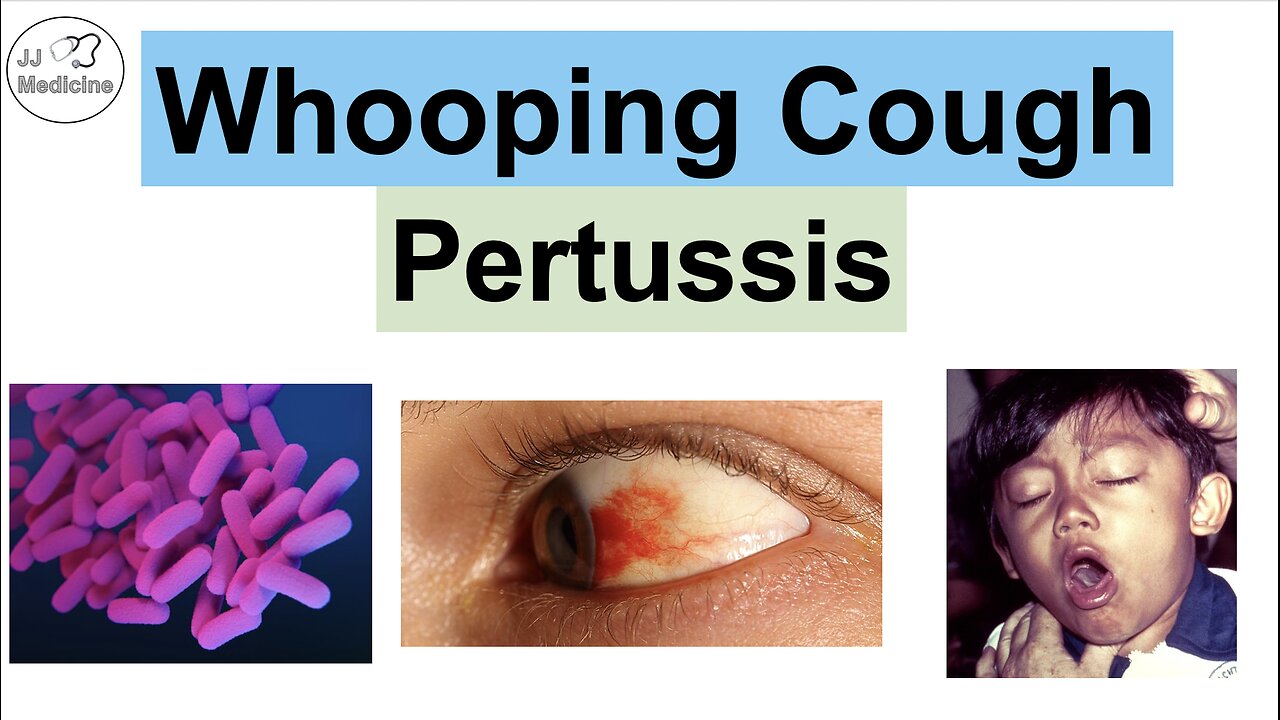Premium Only Content

Whooping Cough (Pertussis) | Transmission, Pathophysiology, Symptoms, Diagnosis, Treatment
Whooping Cough (Pertussis) | Transmission, Pathophysiology, Symptoms, Diagnosis, Treatment
Whooping Cough (which is also known as Pertussis) is a respiratory infection caused by a gram negative bacteria known as Bordetella pertussis. Whooping cough is an especially significant condition in young infants. Clinical features of Whooping Cough occur in 3 stages and characteristic symptoms include paroxysms of severe cough and post-tussive emesis among others. In this lesson, we discuss how we become infected with Whooping Cough, important pathophysiology involving 3 toxins the bacteria produces, the clinical stages and signs and symptoms along with complications, how it is diagnosed and how it is treated.
I hope you find this lesson helpful. If you do, please like and subscribe for more lessons like this one!
JJ
**MEDICAL LEGAL DISCLAIMER**: JJ Medicine does not provide medical advice, and the information available on this channel does not offer a diagnosis or advice regarding treatment. Information presented in these lessons is for educational purposes ONLY, and information presented here is not to be used as an alternative to a healthcare professional’s diagnosis and treatment of any person/animal. Only a physician or other licensed healthcare professional are able to determine the requirement for medical assistance to be given to a patient. Please seek the advice of your physician or other licensed healthcare provider if you have any questions regarding a medical condition.
-
 LIVE
LIVE
TonYGaMinG
1 hour ago🟢LIVE NOW -DAYZ with ShorianTrax!🌄
89 watching -
 LIVE
LIVE
Pepkilla
2 hours agoSeason 5 Call of Duty ~ Ranked BOT Play
91 watching -
 9:02
9:02
MattMorseTV
1 day ago $58.87 earnedTrump's FBI just DECLASSIFIED the UNEDENIABLE PROOF.
98.4K175 -
 25:57
25:57
GritsGG
1 day agoSlamming Duo Lobby w/ New ABR A1 (Aug) Loadout!
68.3K6 -
 41:54
41:54
Stephen Gardner
1 day ago🔥Alex Jones drops BOMBSHELL - President Trump Was RIGHT!
85.2K253 -
 17:59
17:59
The Kevin Trudeau Show Limitless
4 days agoClassified Secret Society File 2: The Truth About The Brotherhood's Hidden Agenda EXPOSED!
105K43 -
 10:47
10:47
Cyclops Videos Joe W Rhea
6 days ago17HMR Winchester Rifle Single Shot Rimfire
43.3K5 -
 1:18:35
1:18:35
Side Scrollers Podcast
2 days agoEVERY 10 SUBS I JUMP
96.4K6 -
 2:39:04
2:39:04
DLDAfterDark
16 hours ago $3.06 earnedDLD Live! The After Hours Armory - The GOALS 2025 Convention After Action Review
38.2K4 -
 2:10:12
2:10:12
Tundra Tactical
17 hours ago $1.73 earnedThe Worlds Okayest Gun Live Stream: GOALS Recap
28.6K2